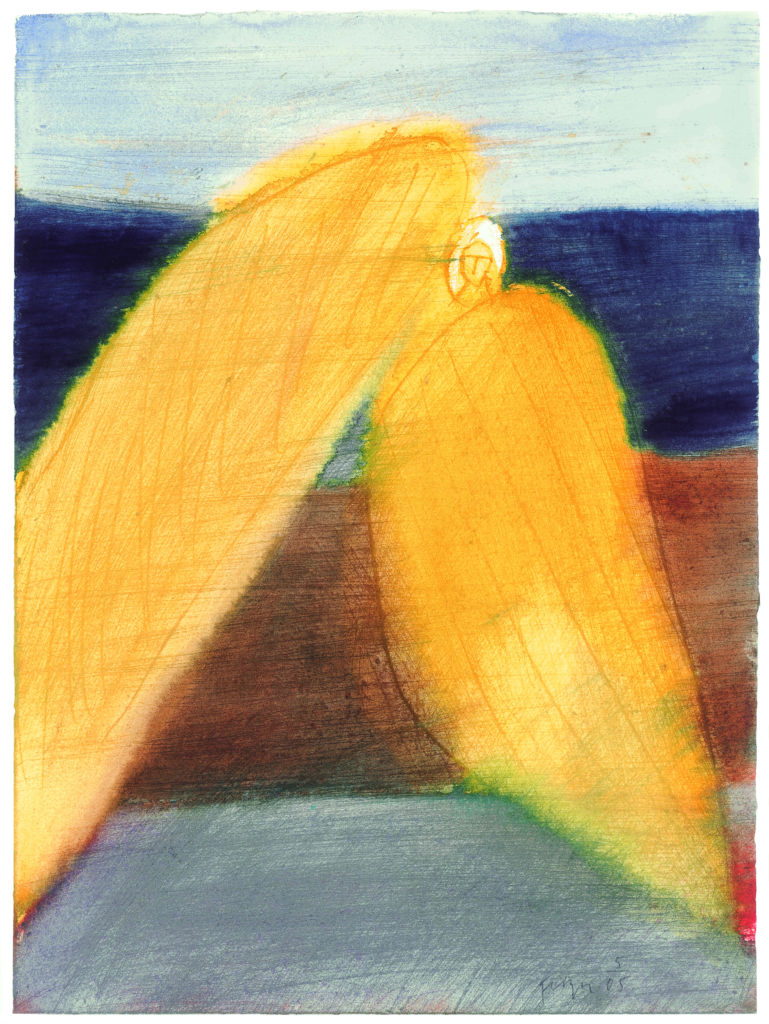untitled
The sheet has no title, but anyone familiar with Andreas Felger’s depictions of angels will not hesitate to recognise one here. His angels fascinate me because they basically remain within the conventions of depiction (“human-like androgynous figure with wings”), but it is precisely within or from this that he creates a never-ending diversity of angelic appearances. I particularly like the fact that many of his angels are not idealised, but suffer from conflicts, problems and limitations – and are therefore not removed from the viewer, but close to him.
In relation to angels, artists initially encounter a problem of representation, of materialising something invisible, something spiritual, i. e. showing it with lines and colour on the surface. One solution lies in abstraction; the depiction is so far absorbed in form and colour that it becomes non-representational, ethereal to a certain extent. Another is the spontaneity, fleetingness and lightness of the drawing and the application of colour in watercolour, which also capture the angel in its element.
In the present sheet, the figure seems to me like a human being who does not (yet) know how to handle his wings; they are too large for him, reaching across from the earth to the sky and belonging almost more to the landscape than to the figure, which is framed small and distant as if in a medallion. Certainly, in terms of colour, figure and wings are one; a little white around the head makes one think of a halo.
Possibly it is not an image of an angel at all, but the depiction of the becoming of an angel. A process of pupation is taking place, resulting in a transfiguration, the transformation of an earthly being into a heavenly one. A difficult process, the elements are still disproportionate, asymmetrical, the contours irregular. Every birth causes pain, even that of an angel, as long as its wings are still so deeply anchored in the horizon lines of the earthly.
Text by Marvin Altner
Marvin Altner holds a doctorate in art history and is a lecturer in art studies at the University of Kassel. After a traineeship at the Hamburger Kunsthalle, he worked as a research assistant and curator at museums in Berlin and Hamburg and as a freelance author in the field of visual arts from the 19th century to the present. Since 2012, he has been teaching at the Kunsthochschule Kassel in the art studies program and works as a research assistant for the Andreas Felger Kulturstiftung, including as author, exhibition coordinator, and supervisor of the database of Andreas Felger’s works.

